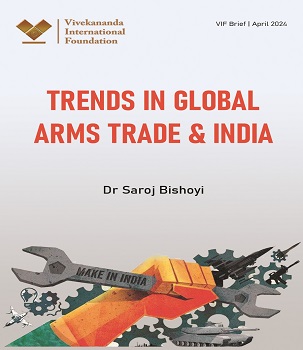
The SIPRI’s recent report on international arms transfer reflects the dynamic trends in the global arms trade. While the US, the world’s largest arms supplier, dominates the international arms market and its share has dramatically increased over the previous five year from 34 percent in 2014-18 to 42 percent in 2019-23. France has emerged as the second-largest arms exporter for the first time displacing Russia, which descended to the third place. The share of arms exports by China and Germany also declined, but they retained fourth and fifth place respectively among the world’s largest arms exporters. These top five exporters of major arms accounted for three quarters i.e.75 percent of all arms exports in 2019-23.
India with 9.8 percent share retained its position as the largest arms importer in the world. Though it has made substantial progress in the domestic arms production and procurement of defence items. Notably, it did not figure among the 25 largest arms exporters, while its arms exports reached to an all-time high of over Rs.21000 crore in the Financial Year (FY) 2023-24. The ongoing Russia-Ukraine war, crisis in the greater West Asia, and China’s aggression in South and East Asia were the key factors that propelled the regional countries to import more weapons from the US and its allies to defend themselves.
With this background, the present brief examines and analyses the dynamic trends in the global arms trade, India’s place in it and the implications for security and defence indigenization efforts. It points out that though India remains as the largest importer, the domestic production of arms and procurement from indigenous sources has increased substantially in the last five years and moving towards self-reliance in defence. It also points out that India’s landmark achievement in defence exports reflects its capacity and capability to design, develop and manufacture cutting-edge weapons for itself and for the world.






Post new comment